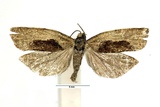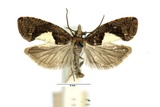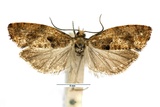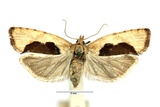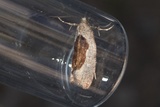Epinotia solandriana (Linnaeus, 1758) Species
Last modified: Nov. 24, 2025, 1:40 p.m.
Present throughout Belgium, but not so common.
Details
- Classification
- Family: Tortricidae > Subfamily: Olethreutinae > Tribus: Eucosmini > Genus: Epinotia > Species: Epinotia solandriana
- Vernacular names
- Zadeloogbladroller (NL), Variable Bell, Varied Birch Roller (EN), Veränderlicher Birken-Pappel-Wickler (DE)
- Synonyms
- Epinotia semimaculana (Hübner, 1793) and Epinotia parmatana (Hübner, 1813)
- First mention in Belgium
- De Sélys-Longchamps E. 1844. Énumération des insectes Lépidoptères de la Belgique. — Mémoires de la Société royale des Sciences de Liége 2: 1–35. On page 21.
- Status
-
Native
Distribution
Imago
Wingspan 16–21 mm. Considerable variation occurs amongst many different forms.
Distinctive dorsal blotch is often present, sometimes darker and other times paler than the ground colour.
There is an easily recognised form that has a large double lobed dark patch along the dorsum. Some of these are ferruginous or black which is distinctive.
Other less clearly marked or coloured forms are impossible to separate from forms of Epinotia sordidana and Epinotia brunnichana and must be determined by genitalia dissection.
Caterpillar
The larva has a yellowish-brown head mottled with dark brown.
Bionomics
Hibernates as an egg. The larva lives in a leaf, rolled longitudinally on the host plant. It pupates in the earth.
They are active at dusk and later come to light.
Flight periods
The adults are usually observed from late June towards mid-August, occasionally later.
Observed on
- Host plant (species):
- Corylus avellana
- Host plant (genera):
- Betula
The larva lives on various trees and shrubs, including Betula, Corylus and occasionally Rosa.
Habitat
It inhabits woodland and scrubby habitats.

